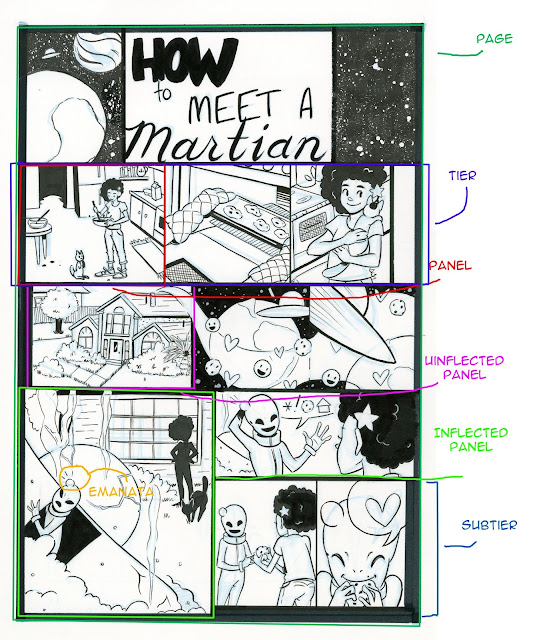Mixing Copic Marker and Watercolor
I'm attending a craft fair in New Orleans this Saturday at the Main Branch Library on Loyola. Since it's a craft fair, not a comic or anime convention, I wanted to make sure I had some general interest pieces on the table. I've been making little floral watercolors off and on for about a year now, and I thought this would be an excellent time to do another batch. I really enjoy being able to offer affordable original art, and these little pieces serve double duty- I make stickers and buttons from the scans, and can sell the originals.
For these I utilize Copic markers and traditional pan watercolors, as well as white gouache for highlights. I render the base colors of the flower first in Copic marker, adding in shadow and additional color with the watercolors. Since Copics are much more vibrant and saturated than most watercolors, this results in vibrant, clear pieces that aren't muddy. I don't have to worry about the red in the camellia reactivating when I shade with greens or blues, nor do I have to worry about the green of the leaves bleeding into the red if both are wet.
Working with both Copics and Watercolors is fairly easy. I ink pieces with Bombay Ink or Sol K ink and allow them to dry for 24 hours. Bombay Ink is waterproof but not necessarily Copic proof- a heavy application of ink will reactivate once the alcohol based marker passes over. Sol K is Copic proof, but not necessarily waterproof- again, heavy applications of ink will reactivate. However, if you let them dry fully, the reactivated ink smears will be minimal, and easily hidden once you apply color.
After the ink has dried and I've erased the pencil carefully (leftover pencil will smear once you go over it with Copic, and can ruin your marker's nib), I start applying the Copic. Whenever I work with Copic, I try to work from light to dark, applying a base layer of color down to prevent streaking and to saturate the paper. Watercolor paper like Fluid takes marker really well, but it's thirsty and can dry your markers out.
Once I'm satisfied with the Copics, I start watercoloring. I basically just watercolor in shadows- complimentary colors to neutralize, indigo or violet hues to cool things down. If a color isn't intense enough, I'll add additional layers with watercolor, since the waterbased pigment wont reactivate the alcohol based pigments/dyes. Once I've finished adding watercolor layers and they've dried, I can add highlights and details with gouache.
The shadows on the crocus were originally applied in Copic, and reinforced with purple and indigo watercolor.
Watercolors can also be used to apply a glaze over lots of colors without risking the colors bleeding. The yellow orchre tint in the background of the bottle was applied in watercolor after the Copic markers had dried.
I wasn't pleased with the sanguine I applied in Copic, so I went over the area with a scarlet pigment for a richer, redder orange.
The 'water' was applied with watercolor, as were the blue shadows.
The next time I do a batch of Copic and watercolor illustrations, I'll make sure to take some process shots to share with you guys!
For these I utilize Copic markers and traditional pan watercolors, as well as white gouache for highlights. I render the base colors of the flower first in Copic marker, adding in shadow and additional color with the watercolors. Since Copics are much more vibrant and saturated than most watercolors, this results in vibrant, clear pieces that aren't muddy. I don't have to worry about the red in the camellia reactivating when I shade with greens or blues, nor do I have to worry about the green of the leaves bleeding into the red if both are wet.
Working with both Copics and Watercolors is fairly easy. I ink pieces with Bombay Ink or Sol K ink and allow them to dry for 24 hours. Bombay Ink is waterproof but not necessarily Copic proof- a heavy application of ink will reactivate once the alcohol based marker passes over. Sol K is Copic proof, but not necessarily waterproof- again, heavy applications of ink will reactivate. However, if you let them dry fully, the reactivated ink smears will be minimal, and easily hidden once you apply color.
After the ink has dried and I've erased the pencil carefully (leftover pencil will smear once you go over it with Copic, and can ruin your marker's nib), I start applying the Copic. Whenever I work with Copic, I try to work from light to dark, applying a base layer of color down to prevent streaking and to saturate the paper. Watercolor paper like Fluid takes marker really well, but it's thirsty and can dry your markers out.
Once I'm satisfied with the Copics, I start watercoloring. I basically just watercolor in shadows- complimentary colors to neutralize, indigo or violet hues to cool things down. If a color isn't intense enough, I'll add additional layers with watercolor, since the waterbased pigment wont reactivate the alcohol based pigments/dyes. Once I've finished adding watercolor layers and they've dried, I can add highlights and details with gouache.
The shadows on the crocus were originally applied in Copic, and reinforced with purple and indigo watercolor.
Watercolors can also be used to apply a glaze over lots of colors without risking the colors bleeding. The yellow orchre tint in the background of the bottle was applied in watercolor after the Copic markers had dried.
I wasn't pleased with the sanguine I applied in Copic, so I went over the area with a scarlet pigment for a richer, redder orange.
The 'water' was applied with watercolor, as were the blue shadows.
The next time I do a batch of Copic and watercolor illustrations, I'll make sure to take some process shots to share with you guys!













Comments
Post a Comment